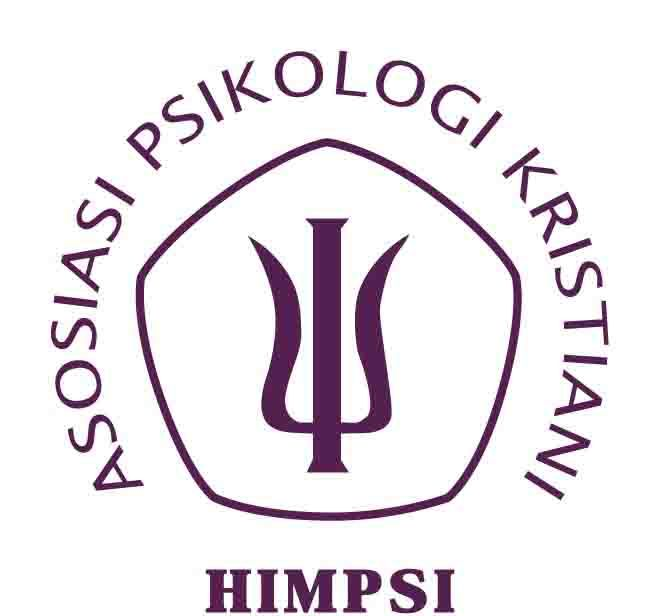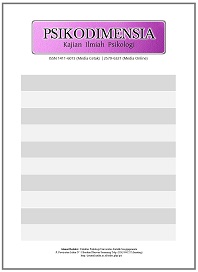Efficacy of Eye Movement Desensitization Reprocessing (EMDR) in Improving Self-Regulation of In-House Filipino Clients with Substance-Use-Disorder
Abstract
Abstract: Drug addiction is considered as a global epidemic which drastically affects millions of people worldwide, damaging an individual’s physiological, social, and psychological facets. One of the constructs that has been determined as an essential factor in the development of a variety of addictive behaviors is self-regulation. It plays an important role in predicting, maintaining, and treating addiction. In this study, the efficacy of Desensitization of Triggers and Urge Reprocessing (DeTUR), an Eye Movement Desensitization Reprocessing (EMDR) addiction protocol, in improving self-regulation was tested among fourteen (14) in-house clients of two drug treatment and rehabilitation centers using sequential explanatory mixed method research design wherein Self-regulation Inventory-Short Version (SRI-S) and individual interviews were employed. Results explicitly proved that self-regulation scores obtained significantly differed before, after, and even the delivery of delayed posttest using the EMDR as an intervention. The study confirmed that EMDR enhances the clients’ self-regulations (Overall SRI) and the sub-areas: positive actions, controllability, expressions of feelings and needs, assertiveness, and well-being seeking. Themes generated using thematic analysis further established a basis for the efficacy of EMDR.
Keywords: drug addiction, self-regulation, Eye-movement Desensitization Reprocessing (EMDR), Desensitization of Triggers and Urge Reprocessing (DeTUR)Keywords
Full Text:
PDFReferences
Abel, N. J., & O’Brien, J. M. (2015). Treating addictions with EMDR therapy and the stages of change. Ney York: Springer Publishing Company.
Abel, N. J., & O'Brien, J. M. (2010). EMDR Treatment of comorbid PTSD and alcohol dependence: A case example. Journal of EMDR Practice & Research, 4(2), 50-59. DOI:10.1891/1933-3196.4.2.50
Abolghasemi, A., & Rajabi, S. (2013). The Role of self-regulation and affective control in predicting interpersonal reactivity of drug addicts. International Journal of High Risk Behaviors and Addiction, 28-33. Retrieved from: http://creativecommons.org/licenses /by/3.0
American Psychiatric Association. (2013). Diagnostic and statistical manual of mental disorders (5th ed.). Arlington: American Psychiatric Publishing.
Bae, H., & Kim, D. (2012). Desensitization of triggers and urge reprocessing for an adolescent with Internet Addiction Disorder. Journal of EMDR Practice & Research, 6(2), 73-81.
Bae, H., Han, C., & Kim, D. (2013). Desensitization of triggers and urge reprocessing for pathological gambling: A case series. Journal of Gambling Studies. DOI:0.1007/s10899-013-9422-5
Bakhshani, N. M., & Hossienbor, M. (2013). A comparative study of self-regulation in substance dependent and non-dependent individuals. Global Journal of Health Science, 5(6), 40-45.
Bandura, A. (1999). Social cognitive theory of personality. Handbook of personality, 2, 154-96.
Belsky, J., & de Haan, M. (2011). Parenting and children’s brain development: The end of the beginning. Journal of Child Psychology and Psychiatry, 54(4), 409-428.
Berger, A. (2011). Self-regulation: Brain, Cognition, and Development. Washington, DC: American Psychological Association.
Besharat, M. (2011). Psychometric properties of a short version of the self-regulation inventory in a sample of iranian population. Research In Clinical Psychology And Counseling, 1(2), 53-70.
Braun, V., & Clarke, V. (2006). Using thematic analysis in psychology. Qualitative research in psychology, 3(2), 77-101.
Brown, S., Gilman, S., Goodman, E., Adler-Tapia, R., & Freng, S. (2015). Integrated trauma treatment in drug court: Combining EMDR therapy and seeking safety. Journal of EMDR Practice and Research, 9(3), 123-136.
Carletto, S., Oliva, F., Barnato, M., Antonelli, T., Cardia, A., Mazzaferro, P., Pagani, M. (2018). Emdr as add-on treatment for psychiatric and traumatic symptoms in patients with substance use disorder. Frontiers in Psychology. DOI:10.3389/fpsyg.2017.02333
Cavadel, E., & Kauf, J. (2018). Family self-sufficiency: A holistic view of self-regulation and its implications for human services programs. Policy & Practice.
Chavarria, J., Stevens, E. B., Jason, L. A., & Ferrari, J. R. (2012). The effects of self-regulation and self-efficacy on substance use abstinence. Alcohol Treat Q, 30(4), 422–432. DOI:10.1080/07347324.2012.718960
Cox, R., & Howard, M. (2007). Utilization of emdr in the treatment of sexual addiction: A case study. Sexual Addiction & Compulsivity, 14, 1-20. DOI: 10.1080/107201606010 11299
Creswell, J. W. (2013). Research design: qualitative, quantitative, and mixed methods approaches. sage publications, incorporated.
Crews, F. T., & Boettiger, C. A. (2009, September). Impulsivity, frontal lobes and risk for addiction. Pharmacol Biochem Behav, 93(3), 237–247. DOI:10.1016/j.pbb.2009.04.018.
Currie-McGhee. (2011). Drug addiction: diseases and disorders. San Diego, CA: Reference Point Press.
Dangerous Drugs Board. (2015). 2015 nationwide survey on the nature and extent of drug abuse.
Dickerson, D., Moore, L. A., Rieckmann, T., Croy, C. D., Venner, K., Moghaddam, J., Novins, D. K. (2017). Correlates of motivational interviewing use among substance use treatment programs serving american indians/alaska natives. Journal of Behavioral Health Services & Research, 31–45. DOI:10.1007/s11414-016-9549-0
EBSCO. (2019). EBSCO host. Retrieved from www.ebscohost.com: http://eds.a.ebscohost.com/eds/results?vid=0&sid=34d3a2f9-8077-461d-b731-89dcb779570c%40sdc-v-sessmgr02&bquery=EMDR%2Band%2Baddiction&bdata=JkF1dGhUeXBlPXNoaWImY2xpMD1GVCZjbHYwPVkmY2xpMT1SViZjbHYxPVkmdHlwZT0wJnNlYXJjaE1vZGU9QW5kJnNpdGU9ZWRzLWxpdmU%3d
Elkins, C. (2018). EMDR therapy. Drug Rehab. Retrieved from DrugRehab.com
Evans, L., & Delfabbro, P. H. (2005). Motivators for change and barriers to help-seeking in Australian problem gamblers. Journal of gambling studies, 21(2), 133-155.
EMDR Institute, Inc. (2019). Frequently asked questions. Watsonville, California, USA. Retrieved April 20, 2019, from www.emdr.com
Ferrari, J., Stevens, E., & Jason, L. (2009). The role of self-regulation in abstinence maintenance: Effects of communal living on self-regulation. Journal of Groups in Addiction & Recovery, 4, 32-41.
Franklin, J. (2015). The effectiveness of EMDR therapy on clients with addictions. Theses, Dissertations, and Projects. Retrieved from https://scholarworks.smith.edu/theses/921
Glassman, T., Werch, C. C., & Jobli, E. (2007). Alcohol self-control behaviors of adolescents. Addictive Behaviors, 32(3), 590-597.
Hase, M., Schallmayer, S., & Sack, M. (2008). Emdr reprocessing of the addiction memory: pretreatment, posttreatment, and 1-month follow-up. Journal of EMDR Practice & Research, 2(3), 170-179. DOI:10.1891/1933-3196.2.3.170
Horvath, A. (2013). Exposure Therapy: A new look at conquering cravings. The Fix. www.thefix.com/content/exposure-therapy-cravings-triggers-CBT8915
Ibanez, M. I., Ruiperez, M. A., Moya, J., Marques, M. J., & Ortet, G. (2005). A short version of the self-regulation inventory (SRI-S). Personality and Individual Differences, 39, 1055–1059.
Kelley, W. M., Wagner, D. D., & Heatherton, T. F. (2015). In search of a human self-regulation system. Annual review of neuroscience, 38, 389.
Marich, J. (2010). Eye movement desensitization and reprocessing in addiction continuing care: A phenomenological study of women in recovery. Psychology Of Addictive Behaviors, 24(3), 498-507. DOI:10.1037/a0018574
Markus, W., & Hornsveld, H. K. (2017). EMDR interventions in addiction. Journal of EMDR Practice and Research, 11(1). DOI:10.1891/1933-3196.11.1.3
Marques, M. J., Ibanez, M. I., Ruiperez, M. A., Moya, J., & Ortet, G. (2005). The self-regulation inventory (SRI): Psychometric properties of a health related coping measure. Personality and Individual Differences.
Miller, R. (2010). The feeling-state theory of impulse-control disorders and the Impulse-Control Disorder Protocol. Traumatology, 16(3), 2.
National Institute on Drug Abuse. (2017, March ). Drugs, Brains, and Behavior: The science of addiction.
Neal, D. J., & Carey, K. B. (2007). Association between alcohol intoxication and alcohol-related problems: an event-level analysis. Psychol Addict Behav, 21(2), 194-204. DOI: 10.1037/0893-164X.21.2.194
Nickerson, M. (2017). Cultural Competence and Healing Culturally Based Trauma with EMDR Therapy. New York: Springer Publishing Company.
Ogden, P., Minton, K., & Pain, C. (2006). Trauma and the body: A sensorimotor approach to psychotherapy. New York: Norton & Co.
Pagani, M., Di Lorenzo, G., Verardo, A. R., Nicolais, G., Monaco, L., Lauretti, G., Siracusano, A. (2012, September). Neurobiological correlates of EMDR monitoring – An EEG study. PLOS ONE, 7(1). DOI:10.1371/journal.pone.0045753
Park, H., Kim, D., Jang, E. Y., & Bae, H. (2016). Desensitization of triggers and urge reprocessing for panuresis: A case report. Psychiatry Investigation, 13(1), 161-163.
Parrocha, A. (2018), More Drug Rehab Centers set for Completion by 2019, Philippine News Agency, Available: https://www.pna.gov.ph /articles/1047180
Percy, A. (2008). Moderate adolescent drug use and the development of substance use self-regulation. Internatinal Journal of Behavioral Development, 32(5), 451-458.
Popky, A. (2005). DeTUR, an urge reduction protocol for addictions and dysfunctional behaviors. EMDR solutions: Pathways to healing, 167–188.
Ranes, B. (2016, March). The brain disease model of addiction. Research Update.
Rothenberg, Z. (2018, October). Trends in combating fraud and abuse in substance use disorder treatment. Journal of Health Care Compliance, 13-20.
Rougemont-Bücking, A., & Zimmermann, E. N. (2012). EMDR-based treatment of psychotraumatic antecedents in illicit drug abusers. A report of two cases. Schweizer Archivfür Neurologie Und Psychiatrie, 163(3), 107-115.
Shapiro, F. (2001). Eye movement desensitization and reprocessing: Basic principles, protocols, and procedures (2nd ed.). New York: Guilford Press.
Solomon, R. M., & Shapiro, F. (2008). EMDR and the adaptive information processing model potential mechanisms of change. Journal of EMDR Practice, 315–325. DOI: 10.1891/1933-3196.2.4.315
Stevens, F. L., Hurley, R. A., & Taber, K. H. (2011). Anterior cingulate cortex: Unique role in cognition and emotion. J Neuropsychiatry Clin Neurosci, 23(2), 121-125. Retrieved from http://neuro.psychiatryonline.org
Taylor, J., Lloyd, D., & Warheit, G. (2003). Self-derogation, peer factors, and drug use among a multiethnic sample of young adults. Journal of Child and Adolescent Substance Abuse.
The Manila Times. (2017). PDEA contends its drug statistics are real, not fake. Manila: The Manila Times.
Vohs, K., & Baumeister, R. (2017). Handbook of self-regulation (3rd ed.). New York: Guilford Press.
Whitwell, J. L., Sampson, E. L., Loy, C. T., Warren, J. E., Rossor, M. N., Fox, N. C., & Warren, J. D. (2007). VBM signatures of abnormal eating behaviours in frontotemporal lobar degeneration. Neuroimage, 35(1), 207-213.
Wills, T. A., Ainette, M. G., Stoolmiller, M., Gibbons, F. X., & Shinar, O. (2008). Good self-control as a buffering agent for adolescent substance use: an investigation in early adolescence with time-varying covariates. Psychol Addict Behav, 22(4), 459-471. DOI: 10.1037/a0012965
Wise, A., & Marich, J. (2016). The perceived effects of standard and addiction-specific emdr therapy protocols. Journal of EMDR Practice and Research, 10(4). DOI: 10.1891/1933-3196.10.4.231
Xu, K., Lin, M., & Haridakis, P. (2015). Being addicted to chinese twitter: exploring the roles of users’ expected outcomes and deficient self-regulation in social network service addiction. China Media Research, 11(2).
DOI: https://doi.org/10.24167/psidim.v20i1.3231
Print ISSN : 1411-6073 | online ISSN : 2579-6321 View My Stats

This work is licensed under a Creative Commons Attribution 4.0 International License.





















